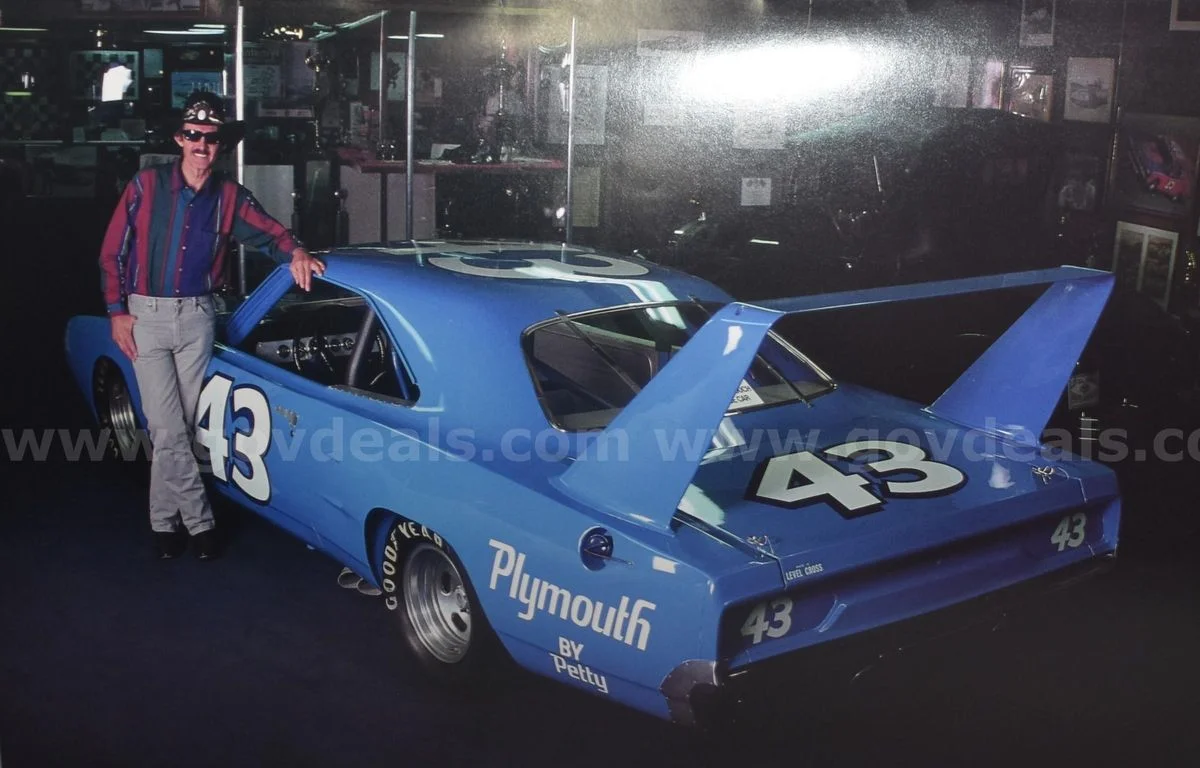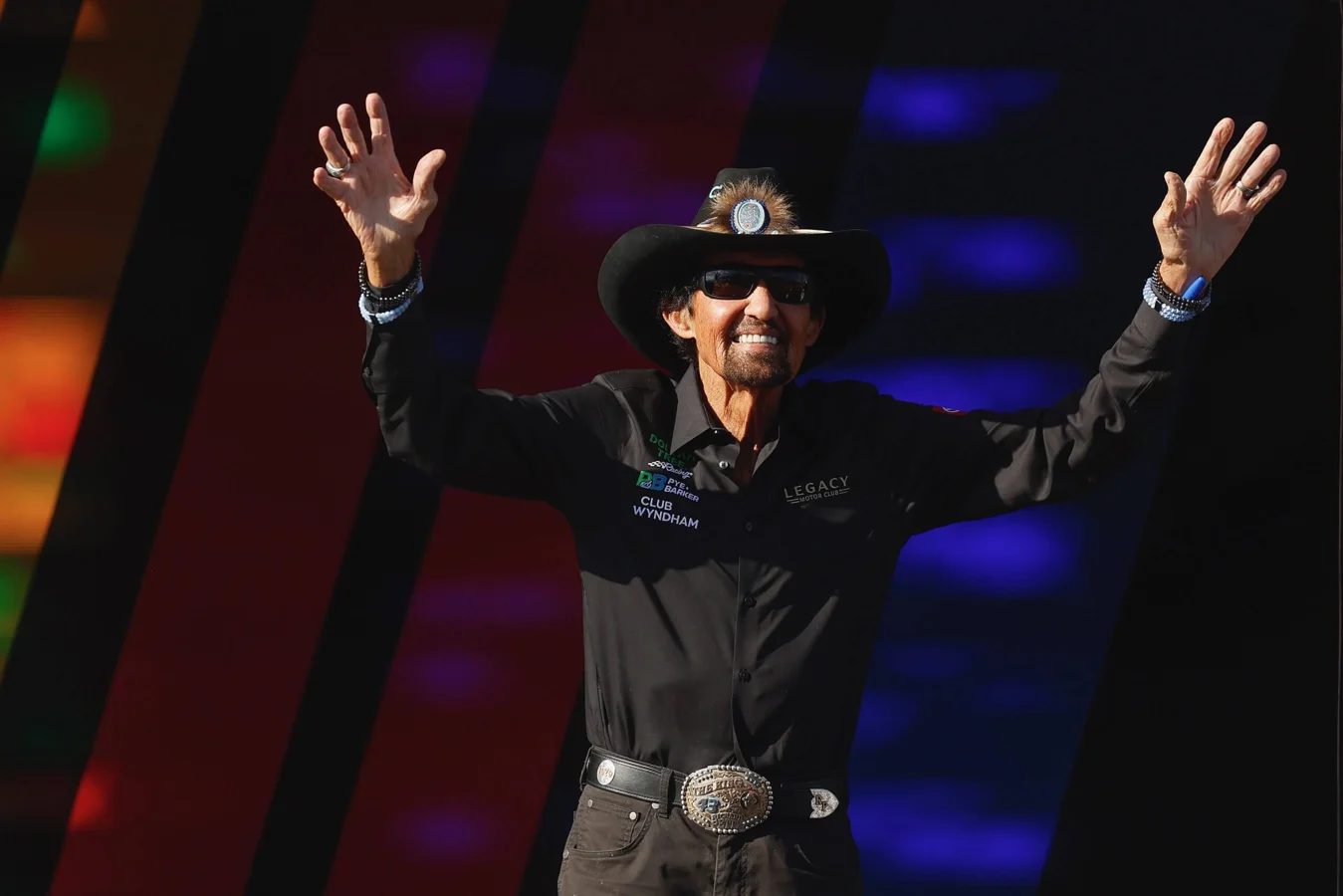Richard Petty’s reflections on old-school NASCAR attitudes shed light on how driver aggression and racing culture have shifted, tracing a path from the hands-on, physical confrontations of his era to today’s more visible, penalized conduct. Speaking at age 88, Petty describes a sport where conflicts were resolved swiftly on the racetrack using bumpers rather than drawn-out gestures, a perspective that highlights the contrast with modern NASCAR’s approach to disputes and discipline.
Petty, known as “The King,” discussed these cultural changes during a recent interview with The Athletic. He emphasized that for his generation, racing was direct and any grievances were handled in the heat of the moment.
“No, we just used a bumper. You know what I mean? If you had trouble with somebody, you tried to take care of it right then. Now, when the race is over, people get healed with each other: they start telephoning each other, faxing each other and stuff.”
—Richard Petty, NASCAR Legend
How Driver Behavior and Enforcement Have Changed Over Time
In NASCAR’s early decades, it was not uncommon for drivers to transmit their displeasure through physical nudges and calculated fender contact. These hard-edged maneuvers served as immediate feedback, and officials rarely stepped in unless damage or danger escalated. Hand gestures, such as flipping the bird, did exist but were seldom seen by broadcast audiences or penalized by the race stewards. Petty and his fellow competitors operated under unwritten codes: resolve issues during the race, and leave them behind once it ended, often riding home together in the same hauler regardless of what happened on track.

The environment has shifted considerably with the arrival of in-car cameras, extensive broadcasting, and explicit conduct rules. Notable penalties have shaped this landscape—such as when Kyle Busch was penalized in 2010 for making an obscene hand gesture at a NASCAR official, an incident that publicly set new boundaries for acceptable behavior. Controversy revived in 2023 when Bubba Wallace was not fined for a similar display, sparking debate over consistency and the spotlight on driver emotions.
Modern technology means any confrontation or signal—no matter how fleeting—can be replayed, judged, and result in immediate consequences. Drivers today sometimes opt for public complaints, radio venting, or online reactions in place of on-track payback, and resolution often drags out long after the race is over.
Shifting Economics and the Impact on Aggression
The evolution of team finances has also influenced how drivers address competition and conflict. During Petty’s era, a primary race car might be expected to run multiple events, making aggression costly and personal—damaged vehicles took weeks to repair, and drivers felt every consequence. As backup cars and modular parts became more accessible, the risk and emotional stakes attached to contact have diminished.
“We didn’t do that. As quick as a race was over, they got it over with. Don’t dwell on anything that’s going to upset you,”
Petty added. —Richard Petty, NASCAR Legend
This reduced risk has created a climate where physical exchanges, like the bump-and-run technique, seem less severe, and outbursts sometimes escalate without the same sense of urgency to resolve them. Composite body parts are discarded and replaced with little sentiment, which can fuel prolonged grudges and more public displays of frustration.
Recent incidents reflect this new normal. Carson Hocevar’s televised middle-finger gesture toward Layne Riggs after a win at Kansas made headlines, indicating how easily moments of anger become public. Respect among racers often blurs under these pressures, and with social media amplifying every incident, emotions ripple far beyond the track itself.
Legacy Dangers: Carbon Monoxide and Driver Endurance
While much attention focuses on evolving driver conduct, Petty’s interview also explored a critical hazard—carbon monoxide exposure inside the race car. Before the introduction of cooling systems and efficient ventilation, drivers regularly faced the threat of inhaling exhaust gases. Petty explained that faulty headers or damaged exhausts could fill the cockpit with poisonous fumes, leaving drivers at risk of oxygen deprivation.
NASCAR has never lost a driver strictly due to carbon monoxide poisoning, but fainting and illness have frequently interrupted races. When asked about the most physically miserable moments in his career, Petty replied,
“That’d be hard to say after running 30-some years and all the heat and broken bones and all that. The biggest part was getting carbon monoxide (poisoning). And you don’t feel anything, you just slow down.”
—Richard Petty, NASCAR Legend
He described the crude remedies available in his day.
“You get out and start getting some oxygen, and they’d give you pure oxygen. First time I got it was Atlanta, and it bothered me the rest of my racing career. I think it was ’61 or ’62. But a lot of times, I’d feel it coming on quick, and I’d get out of the car, get some oxygen and then get back in the car.”
—Richard Petty, NASCAR Legend
Petty’s accounts highlight how his era’s competitors improvised, sealing their cars with towels and tape to keep gases out. While advances in design—sealed firewalls, changes to headers, and the presence of catalytic converters—have curbed this risk, recent cases involving Denny Hamlin and Cody Ware in 2019 show the danger is not entirely gone.
The Enduring Spirit of Competition and Change
Richard Petty’s insights into old-school NASCAR attitudes underline how driver rivalries and the culture of competition have transformed. The memory of handling disputes “with a bumper” robustly illustrates a time when racers solved problems in the moment and then moved forward without holding a grudge. Changes in broadcasting, enforcement practices, and economics have altered these patterns, bringing new tensions to the forefront, while health risks like carbon monoxide highlight the persistent dangers drivers endure.
As modern drivers navigate a landscape shaped by technology, stiffer penalties, and relentless public scrutiny, Petty’s recollections offer a window into the sport’s raw past and its evolving present. NASCAR’s conduct codes may have become clearer and safety systems more advanced, yet the emotional intensity and competitive drive remain as fierce as ever among generations of racers and fans alike.
